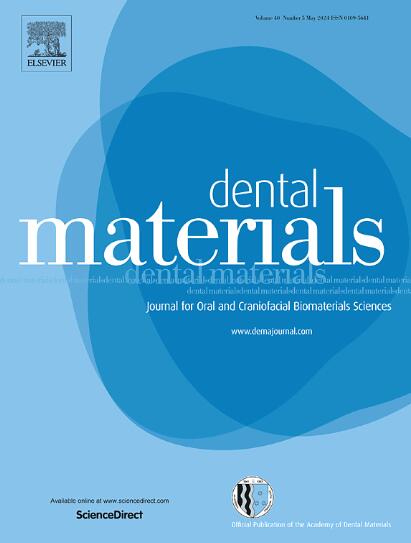基于 NSGA-II 集成 GABP 神经网络提高 PEEK 义齿加工的精度和效率。
IF 4.6
1区 医学
Q1 DENTISTRY, ORAL SURGERY & MEDICINE
引用次数: 0
摘要
目的:聚合物聚醚醚酮(PEEK)具有优异的机械性能、耐化学性、抗疲劳性、热稳定性、辐射半透明性和良好的生物相容性,正逐渐应用于牙科修复体。为了尽快加工出表面粗糙度较低的 PEEK 义齿,提出了非支配排序遗传算法-II(NSGA-II)集成遗传算法反向传播(GABP)神经网络,该网络可以调整铣削 PEEK 义齿的工艺参数组合:方法:使用四轴牙科铣床在不同工艺参数下对 PEEK 进行加工。使用表面粗糙度轮廓仪和扫描电子显微镜(SEM)对 PEEK 义齿的表面粗糙度进行表征。使用名为 NSGA-II 集成 GABP 神经网络算法的多目标优化模型研究了 PEEK 义齿铣削的最佳加工性能。表面粗糙度(Ra)和材料去除率(MRR)被作为优化目标:结果:多目标优化模型有效改善了 PEEK 义齿铣削的表面粗糙度和加工效率。验证实验表明,所有 PEEK 义齿的表面粗糙度均小于 0.2μm,在本文设定的表面粗糙度范围内。GABP 表面粗糙度预测模型的平均误差为 6%。对于相同的表面粗糙度值,优化后的铣削参数都具有更高的材料去除率:研究结果可以利用 NSGA-II 集成 GABP 算法提供适当的铣削参数,从而改进当前的 PEEK 义齿 CAD/CAM 技术。本文章由计算机程序翻译,如有差异,请以英文原文为准。
Improving accuracy and efficiency of the machined PEEK denture based on NSGA-II integrated GABP neural network
Objectives
The polymer polyetheretherketone (PEEK) is gradually being used in dental restorations because of its excellent mechanical properties, chemical resistance, fatigue resistance, thermal stability, radiation translucency and good biocompatibility. To process PEEK dentures with lower surface roughness as quickly as possible, the non-dominated sorting genetic algorithm-II (NSGA-II) integrated genetic algorithm back propagation (GABP) neural network was proposed, which can adjust the combination of process parameters for milling PEEK dentures.
Methods
The PEEK machining was conducted using a four-axis dental milling machine at different process parameters. The surface roughness of PEEK dentures was characterized using surface roughness profiler and scanning electron microscopy (SEM). The optimum machining performance of milling PEEK dentures was investigated using a multi-objective optimization model named as NSGA-II integrated GABP neural network algorithm. The surface roughness (Ra) and material removal rate (MRR) were used as optimization objectives.
Results
The multi-objective optimization model effectively improved surface roughness and machining efficiency for milling PEEK dentures. The validation experiments showed that the surface roughness of all PEEK dentures was less than 0.2, which was within the range of surface roughness set in this paper. The GABP surface roughness prediction model had an average error of 6 %. For the same surface roughness value, the optimized milling parameters all had a greater material removal rate.
Significance
The research results can improve current PEEK denture CAD/CAM technology by providing appropriate milling parameters using NSGA-II integrated GABP algorithm.
求助全文
通过发布文献求助,成功后即可免费获取论文全文。
去求助
来源期刊

Dental Materials
工程技术-材料科学:生物材料
CiteScore
9.80
自引率
10.00%
发文量
290
审稿时长
67 days
期刊介绍:
Dental Materials publishes original research, review articles, and short communications.
Academy of Dental Materials members click here to register for free access to Dental Materials online.
The principal aim of Dental Materials is to promote rapid communication of scientific information between academia, industry, and the dental practitioner. Original Manuscripts on clinical and laboratory research of basic and applied character which focus on the properties or performance of dental materials or the reaction of host tissues to materials are given priority publication. Other acceptable topics include application technology in clinical dentistry and dental laboratory technology.
Comprehensive reviews and editorial commentaries on pertinent subjects will be considered.
 求助内容:
求助内容: 应助结果提醒方式:
应助结果提醒方式:


